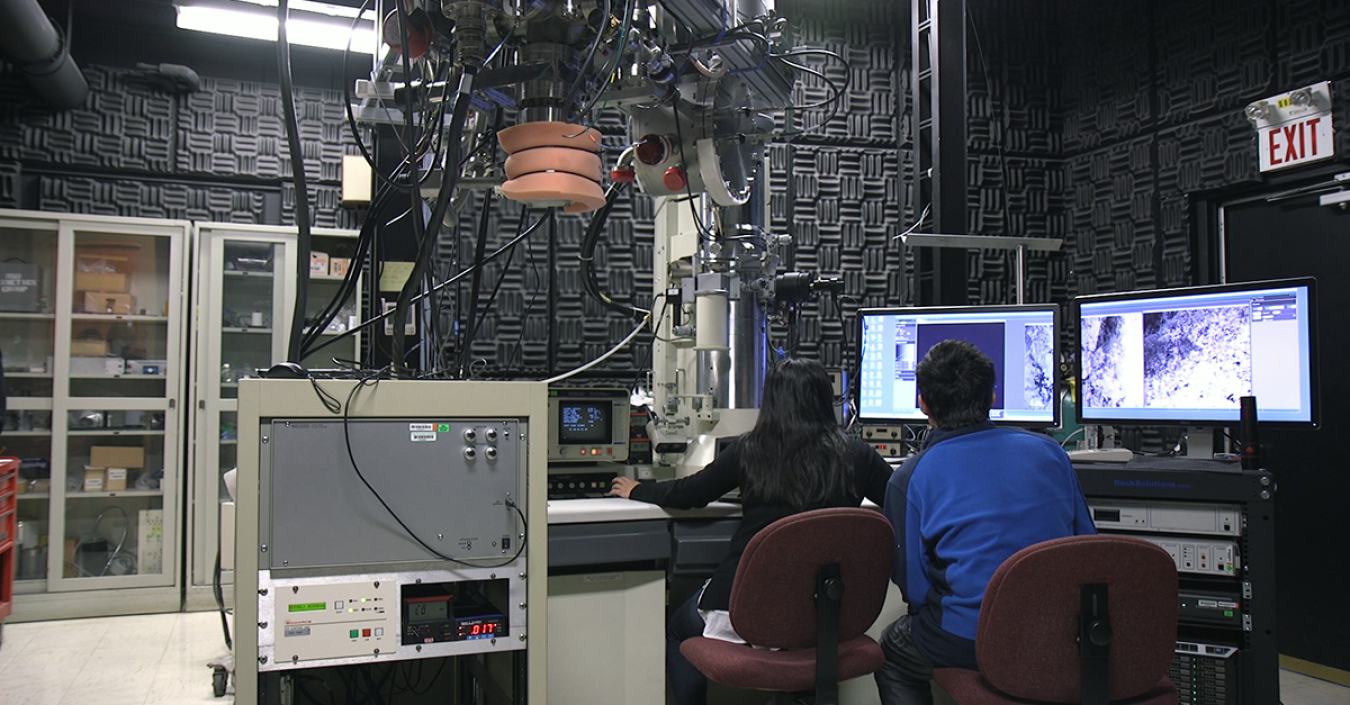The IVEM-Tandem facility at Argonne National Laboratory lets researchers look at material changes caused by ion irradiation as it happens.
June 11, 2018If you’re looking for a game-changer in material science then look no further than the IVEM-Tandem Facility at Argonne National Laboratory.
IVEM is part transmission electron microscope—part ion beam accelerator. It’s also one of about a dozen instruments in the world that lets researchers look at material changes caused by ion irradiation as it happens.
Take a look:
Why It Matters
Nuclear materials are exposed to extreme conditions inside a reactor over time.
By understanding how irradiation affects a material, researchers can then create improved materials that are more resistant to intense irradiation, temperature and stress.
IVEM-Tandem
Since it’s hard to observe neutron damage in a reactor environment, IVEM-Tandem can be used as an alternative approach.
It can simulate about a year’s worth of reactor irradiation damage in just one day using ion irradiation—without producing radioactive samples.
This data is crucial to the development of new computer models that can then be used to create new advanced materials ranging from nuclear fuels to waste storage materials.
Capturing the Damage in Real-Time
What’s especially unique about this facility is that it allows researchers to record video of the ion irradiation damage as it happens.
Typically, researchers are only able to capture data before and after an irradiation experiment.
By observing what’s happening in real-time, researchers can get a better look at how this simulated damage effects certain properties of the material.
Here’s an example of a movie captured by IVEM that shows how the structure of an iron sample changes during irradiation.
The Dual-Beam Accelerator Facility
IVEM is a two-floor facility with a pair of accelerators located upstairs that can be directed to various beam lines for irradiation experiments.
One of the lines runs directly into the microscope downstairs that displaces atoms to simulate the damage.
Another beam (located downstairs) allows researchers to implant helium (He) into material samples to study the He effects in irradiated fuels and reactor materials.
All experiments can produce data on damage much faster than would be the case in a typical reactor.
So Who Uses It?

IVEM is a user facility for the U.S. Department of Energy’s Office of Nuclear Energy. It currently serves more than 30 projects from universities, national laboratories and industry both domestically and abroad.
These projects study advanced nuclear materials and fuels for radiation resistance and accident tolerance, along with storage materials for spent fuels and computer modeling and simulations.


